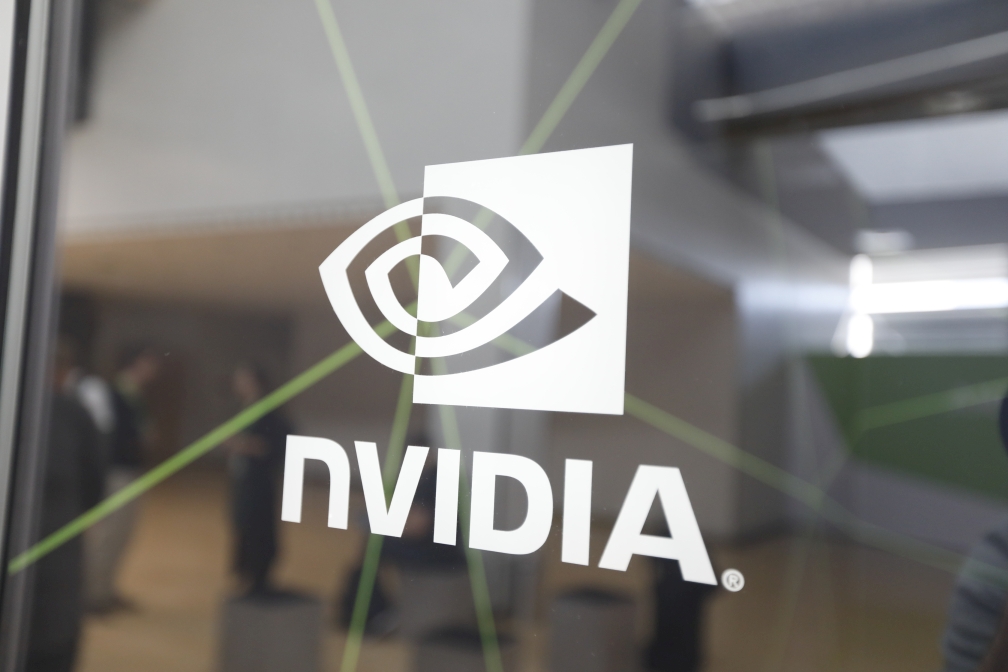 INFRA
INFRA
 INFRA
INFRA
 INFRA
INFRA
Nvidia Corp. today introduced a set of new graphics processing units for laptops, including a trio of top-end chips aimed at industries such as film and engineering.
The Quadro RTX 3000, 4000 and 5000 are slimmed-down version of the powerful workstation GPUs Nvidia debuted last August. The fastest of those workstation cards packs more than 5,300 processing cores that can perform 32 trillion calculations per second. Nvidia has carried over most of the product family’s features into the three new chips, but lowered processing speeds to address the power and heat constraints of laptops.
The flagship Quadro RTX 5000 sports 3,504 cores that can perform 9.4 trillion calculations per second. Of those cores, 384 are Tensor Cores, specialized circuits designed to speed up applications that make use of artificial intelligence. There are also 48 RT Cores optimized for ray tracing, a method of rendering highly realistic light and shadows that is being increasingly adopted by graphic designers.
Nvidia introduced the top-end Quadro RTX chips alongside a new graphics card lineup dubbed Quadro T Series. Positioned a few rungs lower on the price scale, it includes just two chips on launch. The first will be sold under the brand T2000 and can handle 3.5 trillion calculations per second while the other, the T1000, tops out at 2.6 trillion calculations.
Nvidia also took the opportunity to update its low-end GPU lineup. The new Quadro P620 and Quadro P520 provide a 20% and 37.5% speed improvement over their predecessors, respectively, as well as higher memory speeds. They don’t feature any Tensor or RT Cores, but the cards will be priced much lower than their faster siblings.
All the chips are available for order today. Over the next few months, the Quadro RTX cards will also ship with new high-end laptops that will be sold by Nvidia hardware partners under the Nvidia Studio brand. On top the upgraded silicon, these machines will include specialized software drives to speed up popular engineering and graphic design applications.
Nvidia unveiled the chips at the Computex conference in Taipei, where it also pulled back the curtains on a new edge computing platform. The Nvidia EGX is a reference architecture that will allow server makers to build lightweight, efficient machines for running AI software outside traditional data centers.
Support our open free content by sharing and engaging with our content and community.
Where Technology Leaders Connect, Share Intelligence & Create Opportunities
SiliconANGLE Media is a recognized leader in digital media innovation serving innovative audiences and brands, bringing together cutting-edge technology, influential content, strategic insights and real-time audience engagement. As the parent company of SiliconANGLE, theCUBE Network, theCUBE Research, CUBE365, theCUBE AI and theCUBE SuperStudios — such as those established in Silicon Valley and the New York Stock Exchange (NYSE) — SiliconANGLE Media operates at the intersection of media, technology, and AI. .
Founded by tech visionaries John Furrier and Dave Vellante, SiliconANGLE Media has built a powerful ecosystem of industry-leading digital media brands, with a reach of 15+ million elite tech professionals. The company’s new, proprietary theCUBE AI Video cloud is breaking ground in audience interaction, leveraging theCUBEai.com neural network to help technology companies make data-driven decisions and stay at the forefront of industry conversations.